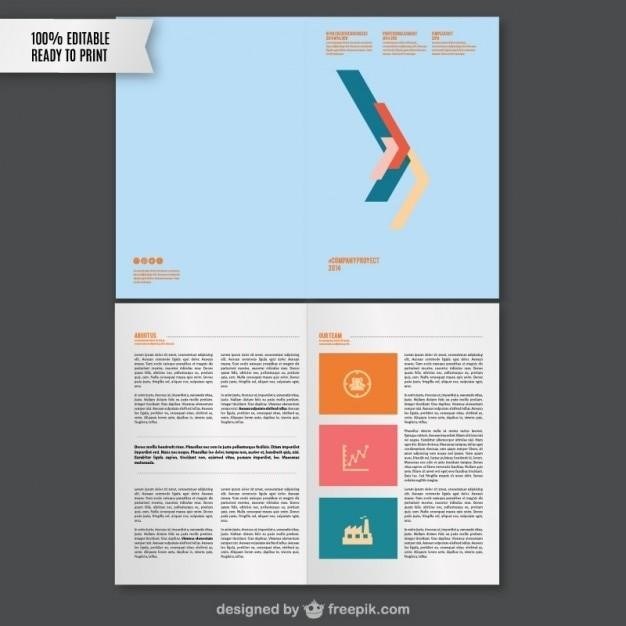Moonlight Sonata 1st Movement⁚ Accessibility of Sheet Music
Numerous websites offer free PDF downloads and MIDI files of Beethoven’s Moonlight Sonata, first movement. Many sources provide various arrangements catering to different skill levels, from beginner to advanced.
Free Online Resources
The internet provides a wealth of free resources for obtaining sheet music for the first movement of Beethoven’s Moonlight Sonata. Websites dedicated to sharing musical scores often feature this popular piece in various formats, including PDF. These online repositories frequently offer different arrangements, catering to various skill levels, from simplified versions for beginners to more challenging interpretations for advanced pianists. Many platforms allow for direct PDF downloads, enabling immediate access to the sheet music. Remember to check licensing information before using any downloaded material.
PDF Downloads and MIDI Files
Many websites offer the first movement of Beethoven’s Moonlight Sonata as downloadable PDF sheet music. These PDFs are often high-quality scans or digitally created scores, providing a convenient and readily printable format for musicians. In addition to PDFs, MIDI files are also commonly available. MIDI files offer a digital representation of the music, allowing for playback on computers and other MIDI-compatible devices. This dual format availability caters to different learning styles and technological preferences, offering both visual (PDF) and auditory (MIDI) access to the piece. The availability of both formats enhances accessibility for a wider range of users.
Websites Offering Free Sheet Music
Several online platforms specialize in providing free sheet music, including the first movement of Beethoven’s Moonlight Sonata. These websites often feature a diverse collection of classical music scores, readily available for download in PDF format. Some sites may require registration or a small donation, but many offer free access to a substantial library of pieces. Users can search for “Moonlight Sonata” or “Beethoven Piano Sonata No. 14” to locate various versions and arrangements. Remember to check the licensing information before using any downloaded sheet music. Always respect copyright laws and support composers and arrangers where possible, perhaps through purchasing commercially available sheet music if desired. Exploring these websites can be a valuable resource for finding various versions and arrangements of this iconic piece.
Variations and Arrangements
The Moonlight Sonata’s first movement boasts numerous arrangements for diverse skill levels, from simplified versions for beginners to advanced transcriptions for experienced pianists.
Different Skill Levels
Accessibility of Beethoven’s iconic Moonlight Sonata, specifically its first movement, is significantly enhanced by the availability of sheet music tailored to various skill levels. Beginners can find simplified versions that maintain the essence of the piece while reducing technical complexities, making it achievable for those in the early stages of their piano journey. Intermediate players can access arrangements that introduce more challenging passages and nuances, allowing for a deeper engagement with the music. Advanced players, meanwhile, can explore versions that push technical boundaries, offering intricate embellishments and interpretive possibilities beyond those found in simpler arrangements. This range of difficulty ensures that pianists of all abilities can appreciate and perform this timeless masterpiece.
Simplified Versions for Beginners
For aspiring pianists, simplified arrangements of the Moonlight Sonata’s first movement are readily available. These versions reduce the technical demands while preserving the melodic beauty and emotional impact of Beethoven’s masterpiece. Often, these beginner-friendly adaptations streamline complex chord progressions and intricate fingerings, making them accessible to those with limited experience. The simplified versions focus on core musical elements, allowing beginners to grasp the overall structure and emotional arc of the piece without being overwhelmed by technical hurdles. This approach enables a fulfilling musical experience and fosters a sense of accomplishment, encouraging further exploration of classical piano repertoire. Many online resources and publications offer such simplified scores, making them easily accessible to budding musicians.
Advanced Arrangements
Beyond the standard score, advanced arrangements of the Moonlight Sonata’s first movement offer seasoned pianists opportunities for deeper musical exploration. These versions often include embellishments, extended passages, or alternative voicings to challenge and inspire more experienced players. Such arrangements might incorporate intricate ornamentation, expanded harmonies, or virtuosic runs, pushing the technical and interpretive boundaries of the piece. They might also feature transcriptions for different instruments or ensembles, adding new dimensions to the familiar melody. These advanced versions are perfect for pianists seeking to refine their technique and delve into the subtleties of Beethoven’s compositional style. Finding these more challenging scores might require searching specialized classical music websites or contacting music publishers directly.
Finding Sheet Music⁚ Specific Sources
Explore online retailers, print-on-demand services, digital music platforms, and specialized classical music websites for diverse arrangements of the Moonlight Sonata’s first movement.
Online Retailers and Print-on-Demand Services
Many online retailers offer Beethoven’s Moonlight Sonata, first movement, sheet music as PDF downloads or physical prints. Sites like SheetMusicPlus and Musicnotes.com are popular choices, providing various arrangements for different skill levels. These platforms often allow for immediate downloads, convenient for those needing quick access. Print-on-demand services provide a tangible copy, ideal for those who prefer a physical score. The quality can vary; always check customer reviews before purchasing. Consider factors like the arrangement’s difficulty, the publisher’s reputation, and the clarity of the notation when making your selection. Remember to compare prices and shipping costs before committing to a purchase. This ensures you find the best value and quality for your needs. Exploring multiple sites may reveal different versions or special offers.
Digital Music Platforms
While primarily known for audio, some digital music platforms offer sheet music alongside their audio tracks. These platforms may not always specialize in classical music, so the selection might be limited compared to dedicated sheet music sites. However, they offer convenience if you already use the platform for listening. Check for availability of the Moonlight Sonata, first movement, in various arrangements, paying attention to the quality of the digital score. Some platforms may offer interactive sheet music with playback features, which can be beneficial for learning or practice. Be mindful of licensing restrictions; ensure your use aligns with the platform’s terms of service before downloading or printing. The availability and format of sheet music can change, so it’s essential to check regularly. Compare pricing and features against dedicated sheet music providers to determine the best option for your needs.
Specialized Classical Music Websites
Websites dedicated to classical music often feature extensive sheet music libraries, including various arrangements of Beethoven’s Moonlight Sonata, first movement. These sites frequently offer high-quality scans or digitally created scores, often with options for different skill levels. Expect to find detailed information about the composer, historical context, and sometimes even performance notes. Many specialized websites allow for browsing by composer, instrument, or difficulty level, simplifying your search. Some may offer free scores, while others operate on a subscription basis or charge per download. Compare pricing and the range of arrangements available before committing to a purchase or subscription; Always check the licensing terms to ensure you are permitted to download and print for personal use. Consider the reputation and user reviews before choosing a provider to ensure you receive accurate and reliable sheet music.
Understanding the Music
Delve into Beethoven’s compositional process and the historical context surrounding the creation of the iconic Moonlight Sonata’s first movement. Explore its unique musical structure and various interpretations.
Historical Context and Composition
Beethoven composed the Moonlight Sonata, officially titled Piano Sonata No. 14 in C-sharp minor, Op. 27, No. 2, during a period of significant personal and artistic transformation. The piece, written around 1801, reflects the composer’s evolving style, moving away from the Classical period towards the emotional depth and dramatic intensity characteristic of Romanticism. While the exact circumstances surrounding its creation remain debated, its melancholic and evocative nature is undeniable. The nickname “Moonlight Sonata,” coined years later by poet Ludwig Rellstab, captures the piece’s ethereal and dreamlike quality, although Beethoven himself never used this title. Understanding this historical backdrop and Beethoven’s creative process enhances appreciation of the sheet music’s profound emotional impact.
Analyzing the First Movement
The first movement, marked “Adagio sostenuto,” is characterized by its slow tempo and lyrical melody. A distinctive feature is the repeated use of arpeggios in the left hand, creating a shimmering effect often compared to moonlight on water. The melodic line, simple yet profoundly expressive, unfolds gradually, building in intensity before subsiding into moments of quiet reflection. Harmonic progressions are relatively simple, yet the emotional weight is considerable, creating a sense of yearning and introspection. Analyzing the score reveals Beethoven’s masterful use of dynamics, creating a wide range of expression from hushed pianissimo passages to more assertive moments. This interplay between quiet contemplation and subtle emotional peaks is a hallmark of the movement’s power and enduring appeal. Careful study of the musical notation reveals the subtleties of Beethoven’s compositional genius.
Interpretative Approaches
Interpretations of the Moonlight Sonata’s first movement vary widely, reflecting the piece’s inherent ambiguity. Some emphasize the melancholic and introspective aspects, highlighting the slow tempo and hushed dynamics. Others focus on the subtle drama, drawing attention to the occasional bursts of intensity within the predominantly quiet atmosphere. The use of rubato (flexible tempo) is a key element, allowing for a range of expressive choices. Some performers favor a highly romantic approach, emphasizing emotional depth and lyrical phrasing. Others prefer a more restrained, classical style, prioritizing clarity of articulation and structural integrity. Ultimately, the “correct” interpretation remains subjective, with each performer bringing their unique understanding and artistic sensibility to the piece. The resulting diversity of performances underscores the richness and complexity of Beethoven’s masterpiece.


